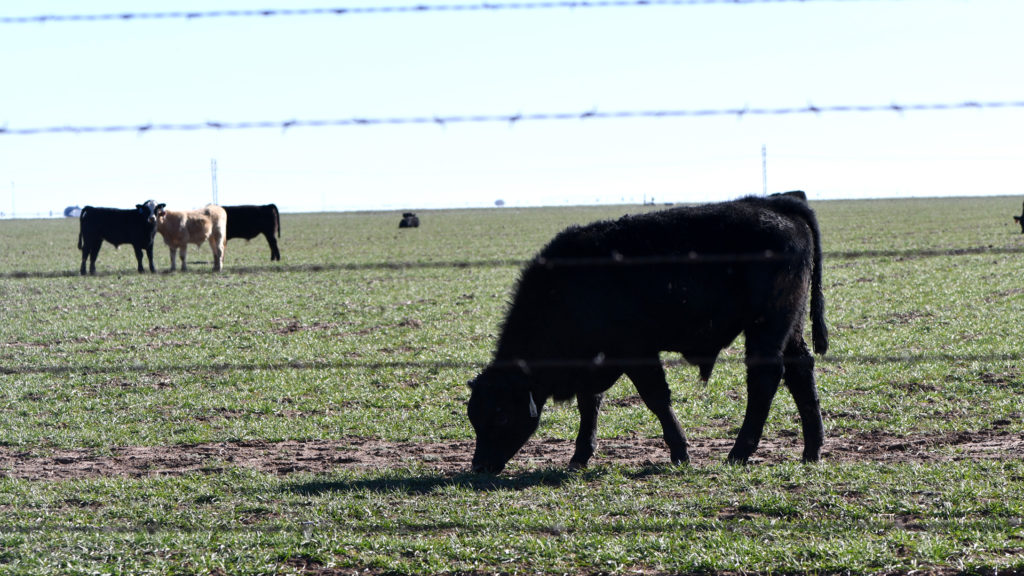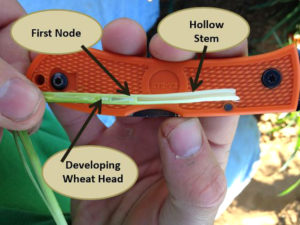Wheat ‘gain or grain’ decision time is now in the Texas High Plains
Writer: Kay Ledbetter, 806-677-5608, skledbetter@ag.tamu.edu
Contacts: Dr. Jourdan Bell, 806-677-5600, Jourdan.bell@ag.tamu.edu

AMARILLO – In the Texas High Plains, where more than half of the wheat crop is grown with a dual purpose – cattle grazing and grain production – now is the critical time to be making the “gain or grain” decision, according to Texas A&M AgriLife Extension Service experts.
Dr. Jourdan Bell, AgriLife Extension agronomist, and her research associate, Carla Naylor, both in Amarillo, said the decision on when to remove cattle grazing wheat fields boils down to economics.

The cutoff date for removing cattle from wheat fields for crop insurance purposes in this region isn’t until March 15.
But the most profitable time to optimize grain yields is at the first hollow stem of the wheat plant, and that is already occurring or will be within a week or so across most of the High Plains, Bell and Naylor said.
“Some producers are willing to take a hit on their grain production to get more gain on their cattle,” Bell said. “It all depends on cattle prices versus grain prices, and with this year’s low grain prices, some producers will choose to graze just a little longer.”
For example, she said, if a producer has a 75-bushel wheat crop and he loses 30 bushels to grazing on 100 acres, he may lose about $12,000 in grain. But if he has a 2-pounds-per-day average daily gain on cattle, he could be making more on the gain than he loses on the grain, depending on the stocking rate, acreage and additional grazing days.
Naylor explained that first hollow stem is used to describe this critical period because “every day the producer grazes beyond first hollow stem, they can expect anywhere from 1-5 percent grain yield loss, depending on the maturity of the wheat.”

Irrigated wheat will be closer to hollow stem than dryland wheat, Bell said. Other factors that can affect the maturity of the wheat are variety, planting date, fertility and water stress.
She said during the vegetative growth stage, the growing point of the plant, or the wheat head, remains in the crown below the soil surface, which allows cattle to graze without nipping off the head. But once that head moves above the soil line – when it breaks dormancy and begins reproductive development – it is susceptible to damage from grazing.
“Early planted and early maturing wheat varieties are likely to have reached this critical stage where the plant is transitioning from a vegetative stage to reproductive development,” Bell said. “At this point, the wheat head will begin moving above the soil surface.”
Producers should begin checking their wheat outside the grazing area for the growing point or first hollow stem, Naylor said. If the wheat has transitioned, it is time to remove cattle if grain production is the end goal.


